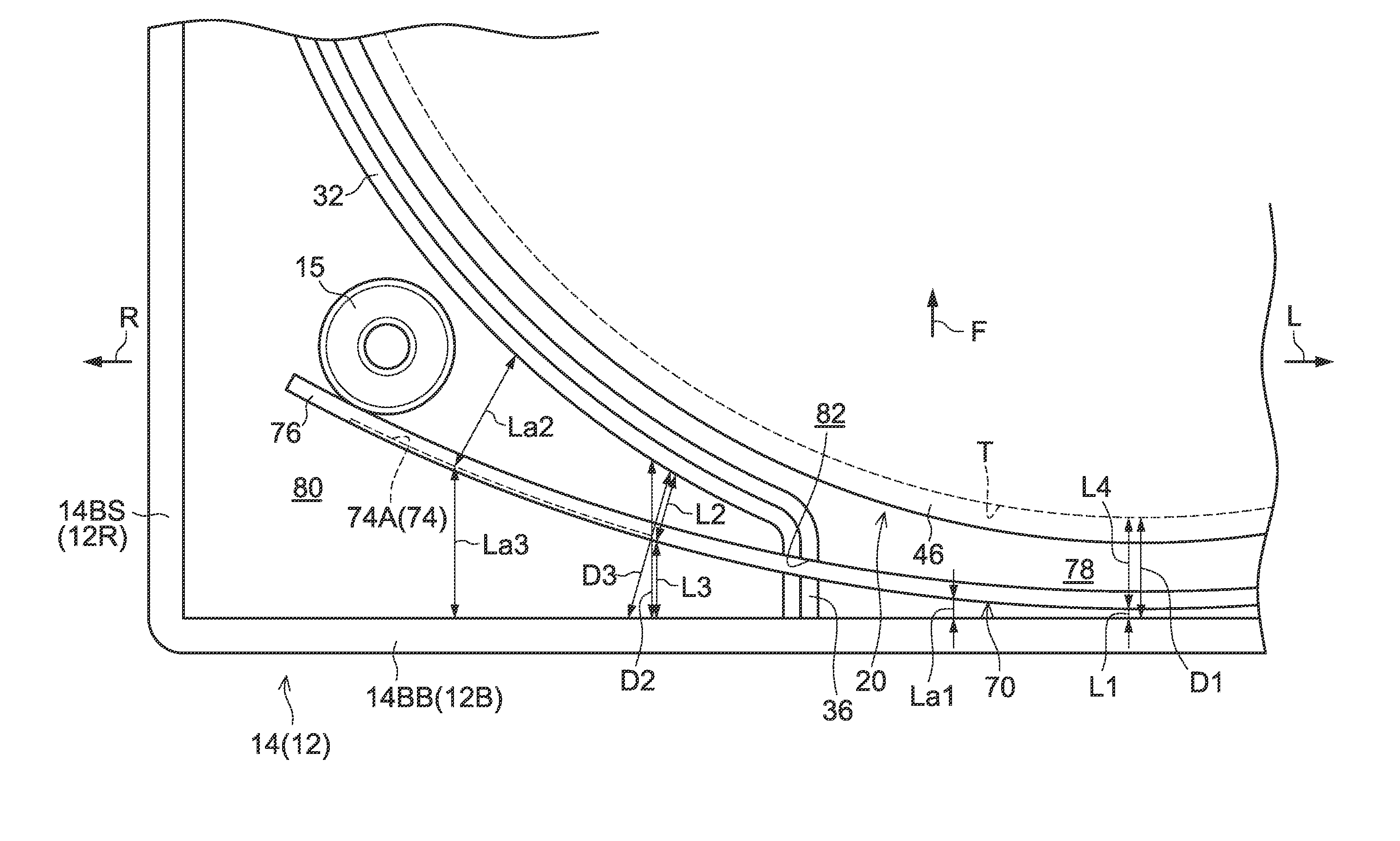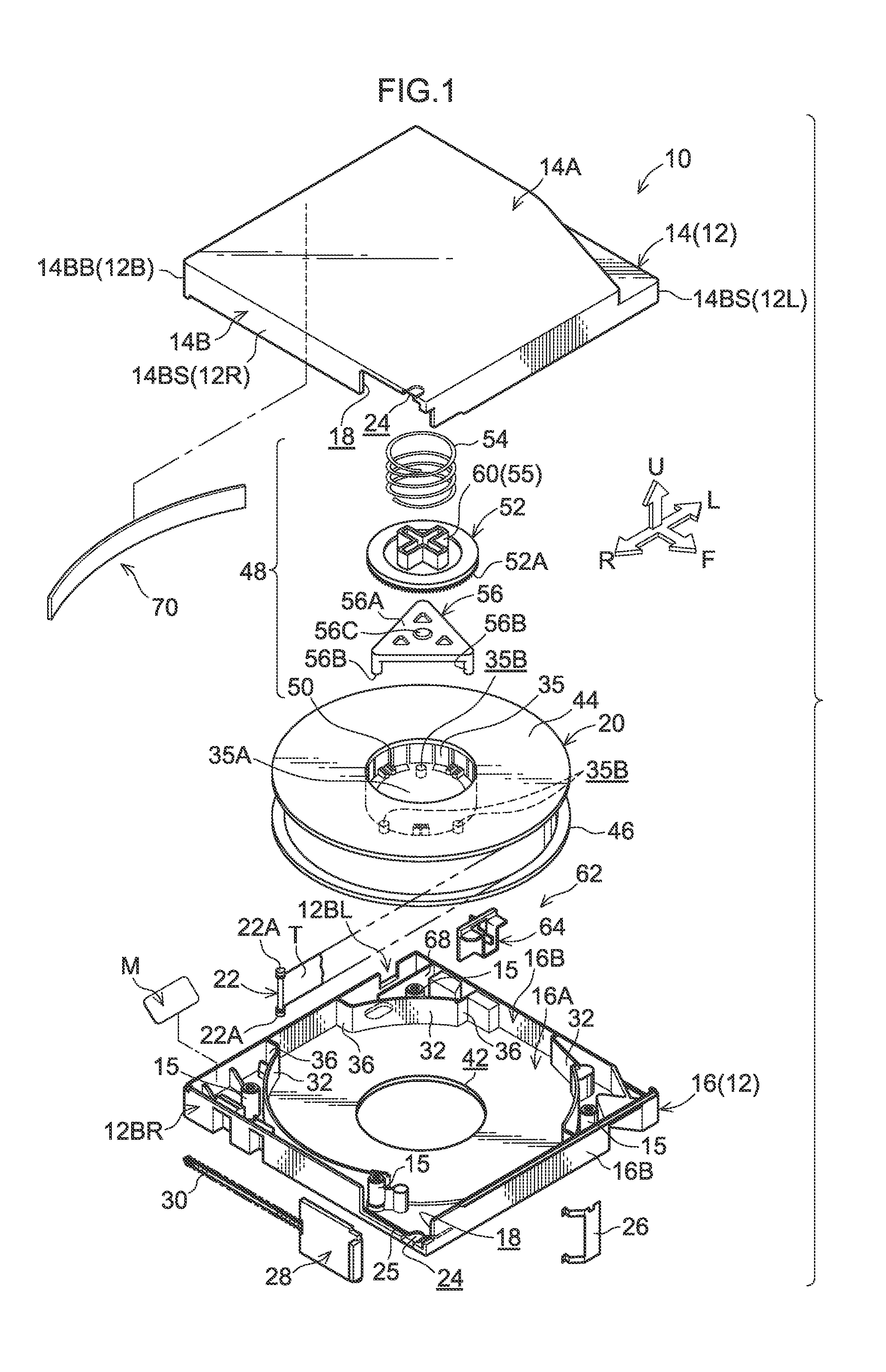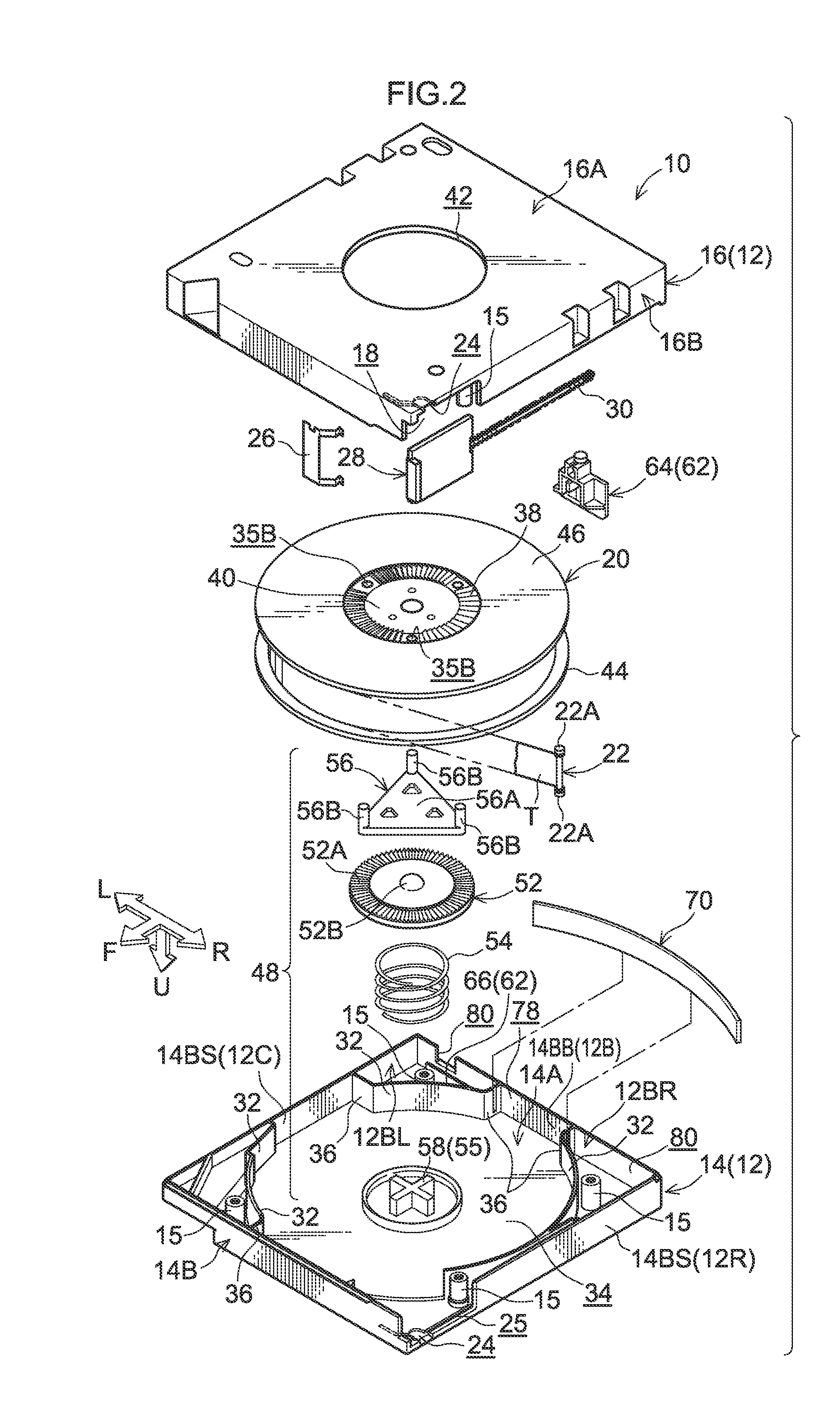Recording tape cartridge
a technology of tape cartridges and cassettes, which is applied in the field of recording tape cartridges, can solve the problems of affecting the ability to easily influence the performance of the rfid tag, so as to achieve the effect of effectively utilizing the space within the cas
- Summary
- Abstract
- Description
- Claims
- Application Information
AI Technical Summary
Benefits of technology
Problems solved by technology
Method used
Image
Examples
second exemplary embodiment
[0128]A second exemplary embodiment of the present invention is described next. Note that parts and portions that are basically the same as those of the above-described first exemplary embodiment are denoted by the same reference numerals as in the first exemplary embodiment, and description thereof is omitted. The exterior of a recording tape cartridge 100 relating to the second exemplary embodiment is shown in a perspective view in FIG. 15. An exploded perspective view of the recording tape cartridge 100 viewed from above is shown in FIG. 14. Note that illustration of the locking mechanism 48 is omitted from FIG. 14. As shown in FIG. 14 and FIG. 15, the recording tape cartridge 100 has a case 102.
[0129]To describe the portions of the case 102 that are different from the case 12, the case 102 is structured by joining together an upper case 114, at which an outer peripheral wall 114B stands downwardly from the peripheral edge of a ceiling plate 114A that is substantially rectangular...
PUM
| Property | Measurement | Unit |
|---|---|---|
| width | aaaaa | aaaaa |
| total height | aaaaa | aaaaa |
| total height | aaaaa | aaaaa |
Abstract
Description
Claims
Application Information
 Login to View More
Login to View More - R&D
- Intellectual Property
- Life Sciences
- Materials
- Tech Scout
- Unparalleled Data Quality
- Higher Quality Content
- 60% Fewer Hallucinations
Browse by: Latest US Patents, China's latest patents, Technical Efficacy Thesaurus, Application Domain, Technology Topic, Popular Technical Reports.
© 2025 PatSnap. All rights reserved.Legal|Privacy policy|Modern Slavery Act Transparency Statement|Sitemap|About US| Contact US: help@patsnap.com



